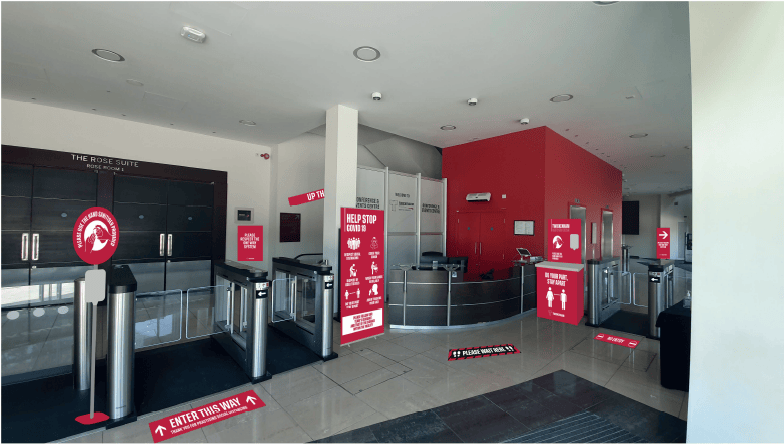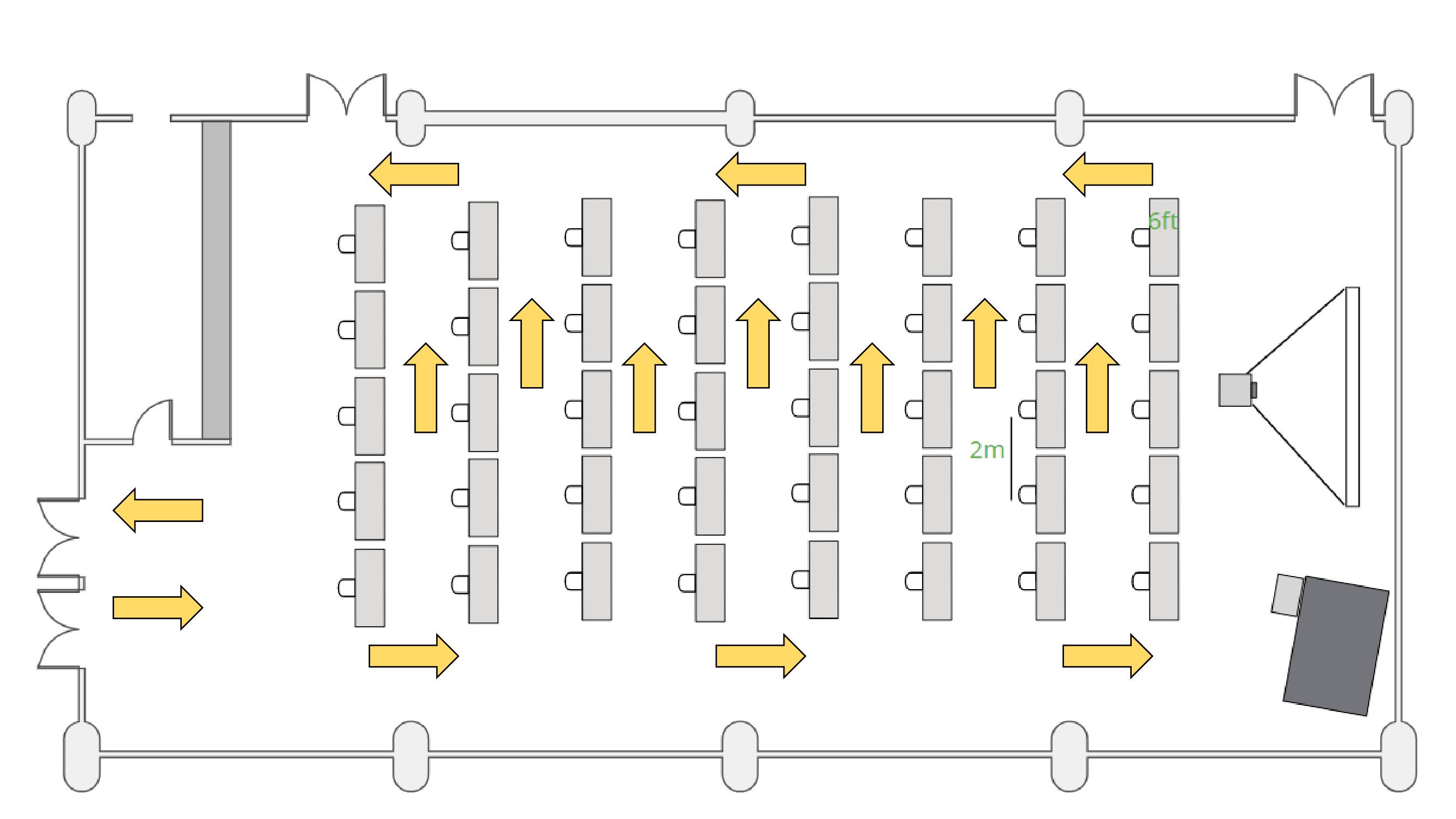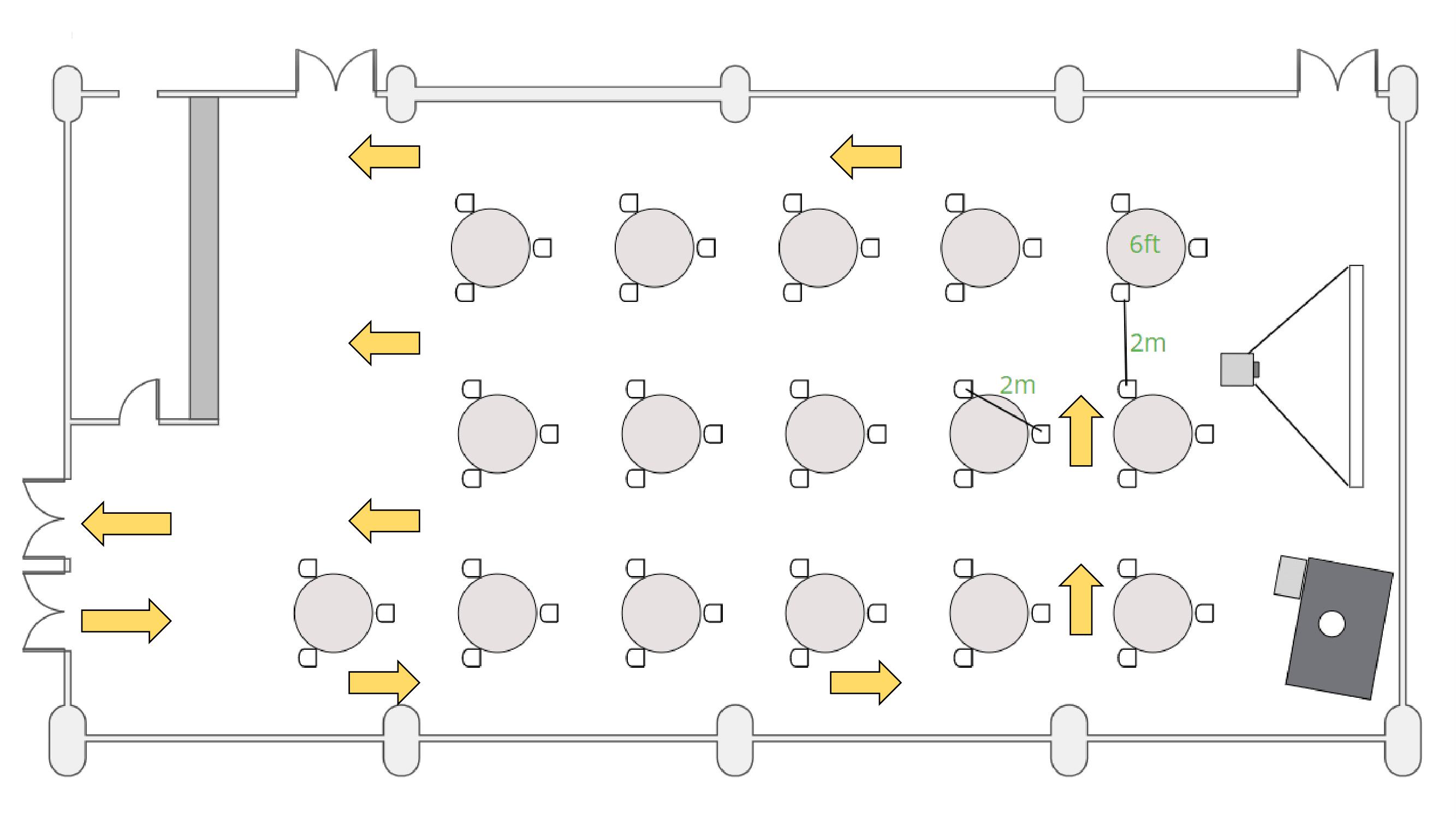
Stadia Venues Ideal for Social Distancing
Stadia venues could provide a ready-made option for event organisers looking to implement social-distancing measures for their delegates.
It’s a pretty compelling argument as well. As more and more venues look at their own operational directives and risk assessments, the natural layout of the facility is becoming a major part of how each one can look after quantities of people in a safe and hygienic way.
At Twickenham, as with other stadia or mass participation venues, these operational challenges are falling on the right side of the history of the building. One of the unplanned for qualities of these venues is that they are built with the management of large crowds heavily in mind. From an operational perspective, this means that hosting large volumes of people has never been an issue, but when we look at regulations for social distancing it really comes into its own.
The reality is that rooms will remain the same size but have to accept lower capacities. However, from an operational point of view, with social distancing in place, the footprint of an individual goes up by 2m at every side and makes a 500 conference feel like 1,000. For a stadium like the home of England Rugby, this means that even a major conference won’t come close to the management of some 82,000 people that it is used to handling on a match day! Again, like other stadia, the design of the build allows for traffic flow, wide aisles, regular conveniences, and multiple entry and exit points. In short, introducing one-way systems is a whole lot easier.

However, this is not just about volume, this is about putting in procedures for separation. One of the predictions for meetings of the future is the need to create smaller working groups or ‘cells’ and this means that having a series of small spaces is a significant advantage. Again, this is another reason to consider stadia, all have at least a ‘floor’ of executive boxes which can all be serviced, and provide often unique spaces for these small groups to work in and dine in. Technology can also link them together if need be, to a central content area.
Twickenham Stadium has released its new regulations. As part of its guidelines, the venue is introducing audience traffic and flow management, with dedicated entry and exit areas for guests, on a smaller scale to its match day operations. The stadium is also introducing ‘wave-based’ catering, and staggered start, finish and break times, to ensure delegates can stay socially distanced, and that different meetings around the stadium are kept apart. The venue is also allowing increased access to the stadium bowl, to give event planners more outside space options.
“This is something we have a lot of experience of during match days, from access to the stadium via car or public transport, to the management of people around the venue,” comments Nils Braude, managing director, Twickenham Experience. “We have multiple entrances and exits to different stands and floors so people can be kept separate. We can also get delegates moving in the same direction within the stadia, meaning distancing is easier for rest rooms, reception and catering.”
Similar to the trend towards smaller meeting space will be an increase reliability on technology, and certainly bandwidth. For the remainder of the year, it’s difficult to tell how many international delegates will be allowed to travel, and there still remains a chance that some delegates will either wish not to attend or not able to attend mass meetings. This means a digital element is important, and venues must look at their own capacities to broadcast.
Twickenham itself is upweighting its digital meeting capabilities to cater for this increase in hybrid meetings and those with a large ‘out-of-room’ audience. Nils continues, “We’re seeing a number of planners looking to break up a bigger meeting into a series of smaller rooms, linked together digitally. Again, this is where stadia can really help, we have lots of small rooms in our hospitality suites, all with screens and AV that can link easily to a central display.”
This move towards stadia is being recognized and repeated around the stadia venue community, making it one for serious consideration from event organisers looking to inject confidence into delegates and their parent companies.
Jon Davies, Managing Director, Levy UK, agrees with the sentiment: "The nature of stadium-based hospitality, and its design, has always been around getting people fed quickly and safely, managing the flow of crowds in a relatively small amount of space. These skills are very easily transferable to hygiene safe food and food service, something that should give event organisers and their delegates added confidence for their next events."

Equally, Debbie Rigney, Marketing & PR Manager, Stadium Experience, added: "Stadium venues really are the ideal choice for all events, particularly during these unprecedented times. The expanse of space these venues boast make maintaining the social distancing measures more possible than many more traditional venues. Stadium staff are also experts at adapting their spaces from meeting matchday requirements to catering for the next bespoke event. Many stadium venues are happy to explore and customise a range of options that might work, including linking into virtual opportunities across rooms, stands or even venues. It's also worth noting that stadium venues have many smaller spaces available for hire such as prestigious executive boxes with stunning pitch views and away from other visitors if required."

Twickenham is sharing its operational procedures with all event planners, as well as making additional information available to delegates wishing to attend events at the stadium, in order to give both event planners and their delegates confidence in holding an event at Twickenham.
In the meantime, there is a rallying cry from mass participation venues, that for new events world, big can beautiful, but also very safe.
Check out Twickenham's conference facilities here: https://www.twickenhamstadium.com/conferences